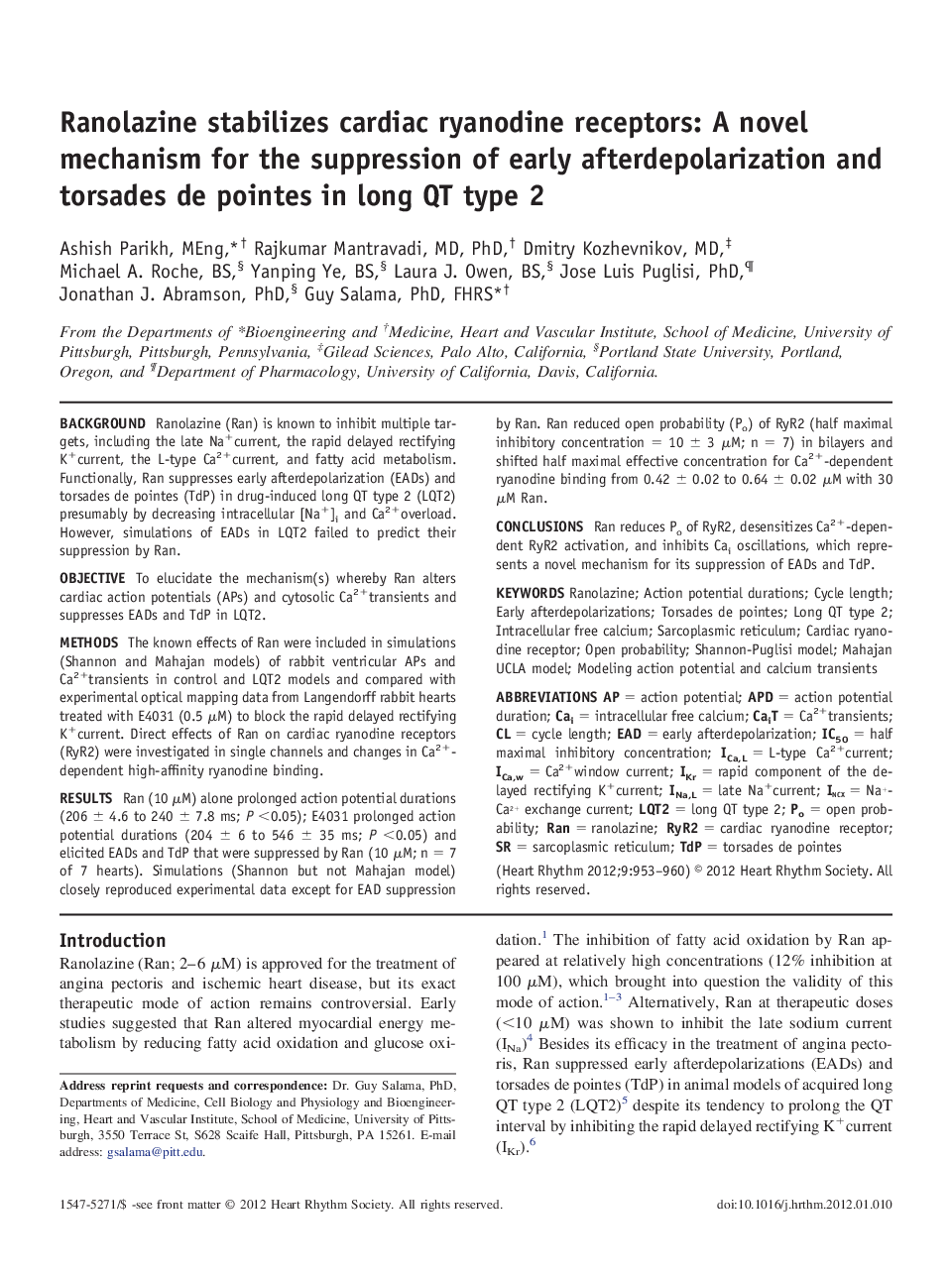| کد مقاله | کد نشریه | سال انتشار | مقاله انگلیسی | نسخه تمام متن |
|---|---|---|---|---|
| 2922571 | 1175849 | 2012 | 8 صفحه PDF | دانلود رایگان |

BackgroundRanolazine (Ran) is known to inhibit multiple targets, including the late Na+current, the rapid delayed rectifying K+current, the L-type Ca2+current, and fatty acid metabolism. Functionally, Ran suppresses early afterdepolarization (EADs) and torsades de pointes (TdP) in drug-induced long QT type 2 (LQT2) presumably by decreasing intracellular [Na+]i and Ca2+overload. However, simulations of EADs in LQT2 failed to predict their suppression by Ran.ObjectiveTo elucidate the mechanism(s) whereby Ran alters cardiac action potentials (APs) and cytosolic Ca2+transients and suppresses EADs and TdP in LQT2.MethodsThe known effects of Ran were included in simulations (Shannon and Mahajan models) of rabbit ventricular APs and Ca2+transients in control and LQT2 models and compared with experimental optical mapping data from Langendorff rabbit hearts treated with E4031 (0.5 μM) to block the rapid delayed rectifying K+current. Direct effects of Ran on cardiac ryanodine receptors (RyR2) were investigated in single channels and changes in Ca2+-dependent high-affinity ryanodine binding.ResultsRan (10 μM) alone prolonged action potential durations (206 ± 4.6 to 240 ± 7.8 ms; P <0.05); E4031 prolonged action potential durations (204 ± 6 to 546 ± 35 ms; P <0.05) and elicited EADs and TdP that were suppressed by Ran (10 μM; n = 7 of 7 hearts). Simulations (Shannon but not Mahajan model) closely reproduced experimental data except for EAD suppression by Ran. Ran reduced open probability (Po) of RyR2 (half maximal inhibitory concentration = 10 ± 3 μM; n = 7) in bilayers and shifted half maximal effective concentration for Ca2+-dependent ryanodine binding from 0.42 ± 0.02 to 0.64 ± 0.02 μM with 30 μM Ran.ConclusionsRan reduces Po of RyR2, desensitizes Ca2+-dependent RyR2 activation, and inhibits Cai oscillations, which represents a novel mechanism for its suppression of EADs and TdP.
Journal: Heart Rhythm - Volume 9, Issue 6, June 2012, Pages 953–960